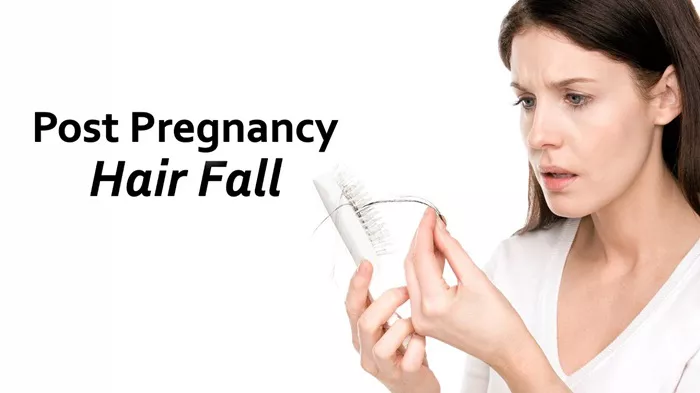Understanding Postpartum Hair Loss
Postpartum hair loss, often referred to as postpartum shedding, is a common phenomenon experienced by many new mothers. Typically occurring around three months after childbirth, it can be a source of concern for women who may be unaware of its causes and duration. It’s essential to understand that postpartum hair loss is a natural and temporary occurrence, stemming from hormonal changes within the body rather than any underlying health issue.
During pregnancy, elevated levels of hormones like estrogen and progesterone can prolong the growth phase of the hair follicles, resulting in thicker, fuller hair for many expectant mothers. However, following childbirth, hormone levels begin to normalize, leading to a sudden shift in the hair growth cycle.
Hormonal Changes During Pregnancy
The hormonal fluctuations experienced during pregnancy play a significant role in postpartum hair loss. Estrogen, in particular, helps maintain the hair in the growth phase (anagen), leading to reduced shedding and increased hair density. However, after giving birth, estrogen levels plummet, triggering a higher proportion of hairs to enter the resting phase (telogen). This shift causes an increase in the shedding of hair, often noticeable to new mothers around three months post-delivery.
Understanding this hormonal mechanism is crucial in comprehending why postpartum hair loss occurs. While the sudden increase in hair shedding can be alarming, it’s essential to recognize that it’s a transient phase and part of the body’s natural response to hormonal changes post-pregnancy.
Hair Growth Cycle
To grasp the dynamics of postpartum hair loss fully, it’s helpful to familiarize oneself with the hair growth cycle. The cycle consists of three main phases:
1. Anagen Phase (Active Growth): This phase is characterized by rapid cell division in the hair follicles, resulting in the production of new hair. During pregnancy, elevated estrogen levels extend the duration of the anagen phase, leading to thicker, fuller hair.
2. Catagen Phase (Transitional): A brief transitional phase where hair growth slows down, preparing the follicle for the next phase.
3. Telogen Phase (Resting): In this phase, the hair follicle remains dormant, and the hair is eventually shed to make way for new growth. Postpartum hair loss, also known as telogen effluvium, primarily affects this phase of the hair growth cycle.
Duration of Postpartum Hair Loss
One of the most reassuring aspects of postpartum hair loss is its temporary nature. While the shedding may be significant and noticeable, it typically resolves on its own within six months to a year after childbirth. Most women find that their hair returns to its pre-pregnancy thickness and volume by the time their child reaches their first birthday.
Understanding the timeline of postpartum hair loss can provide comfort to new mothers who may be concerned about the long-term effects on their hair density and appearance. Knowing that the shedding is transient can alleviate anxiety and allow women to focus on caring for themselves and their newborns during this period of adjustment.
Common Signs of Postpartum Hair Loss
Recognizing the signs of postpartum hair loss can help new mothers distinguish between normal shedding and potential hair loss issues requiring medical attention. The most common sign is noticing more loose hair than usual on brushes, pillows, or shower floors. Additionally, hair may also stick to clothing, particularly during grooming or styling routines.
It’s essential for women experiencing postpartum hair loss to differentiate between excessive shedding and true hair loss conditions such as alopecia. While shedding is a normal part of the postpartum experience, persistent hair loss or bald patches may indicate underlying health issues that warrant further evaluation by a healthcare professional or dermatologist.
Managing Postpartum Hair Loss
While postpartum hair loss is unavoidable for many women, there are steps that can be taken to manage and minimize its impact:
1. Patience: Understanding that postpartum shedding is temporary can alleviate stress and anxiety. With time, the hair will gradually return to its pre-pregnancy state.
2. Gentle Hair Care Practices: Opt for gentle hair care products and avoid excessive brushing or styling, which can exacerbate shedding. Use a wide-tooth comb to detangle hair and minimize breakage.
3. Avoid Excessive Heat Styling: Heat styling tools such as blow dryers, straighteners, and curling irons can weaken the hair shaft and contribute to further damage. Whenever possible, allow hair to air dry or use the lowest heat setting on styling tools.
4. Limit Harsh Treatments: Chemical treatments such as hair dyes, perms, and relaxers can stress the hair follicles and exacerbate shedding. Consider postponing these treatments until postpartum shedding has resolved.
5. Deep Conditioning Treatments: Incorporate deep conditioning treatments into your hair care routine to nourish and strengthen the hair shaft. Look for products containing ingredients such as keratin, biotin, and argan oil, known for their restorative properties.
While these strategies can help manage postpartum hair loss, it’s essential for women to prioritize self-care and seek support from healthcare professionals if experiencing excessive shedding or emotional distress. Personalized advice from a dermatologist or healthcare provider can provide reassurance and guidance tailored to individual needs.
In conclusion, postpartum hair loss is a common and temporary condition experienced by many new mothers. Understanding the underlying hormonal changes and the natural progression of the hair growth cycle can help alleviate anxiety and uncertainty surrounding this phenomenon. By adopting gentle hair care practices and prioritizing self-care, women can navigate postpartum shedding with confidence and emerge with healthy, vibrant hair.
you may be interested

